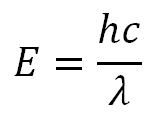That's not the reason though. It has nothing to do with it. 1W is 1W is 1W. 1W of 520nm is the same as 1W of 445nm, it's just that the 445nm needs to emit less photons to achieve that 1W output as each photon has more energy.
Differences in available materials as well as demand.
For pointers, DPSS is difficult to get up past 1W in that form factor, just the way DPSS works. You need active temperature control, more optics, lots of pump power etc. Hard to do in a small form factor. I've been around 532nm green lasers that are doing >40W average and a few kWs peak, but that took ~300lbs of cooling equipment, electronics and optical components to achieve. That said, those powers can be achieved much more efficiently and in much smaller form factors with modern technology.
For 520nm diode lasers, the technology is newer, it's had less time to develop. There may also be less demand for more powerful 520nm diodes. For displays you need less green power anyway as it's already a lot brighter than blue, so you may need say 4W of 445nm to match 1W of 520nm. Thus, no large scale demand for direct diode green more than a watt or so.




